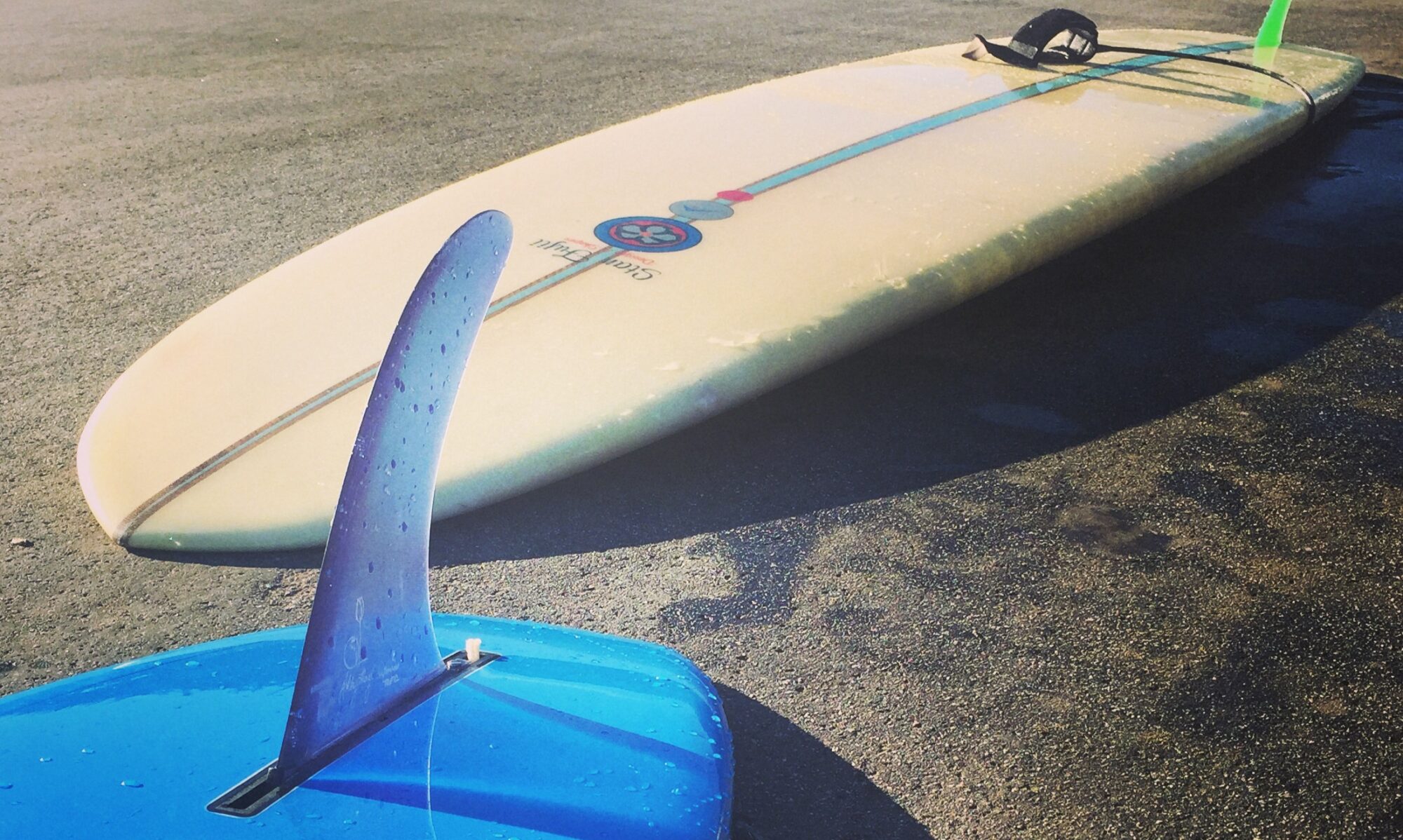Conditions: 3-5 ft. – waist to head high and fair-good conditions. Things are staying clean this afternoon with fun, workable waves in the shoulder-head high+ zone. Top spots see sets running a couple feet overhead. Winds are offshore and the tide drops to a 2′ low @ 12:20PM.
Gear: 9’2″ Sunset Soft Top.
Today was a pretty clean, mellow day. Lots of folks were out, lost of patient waiting for waves. I saw another seal hanging out in the line up. Mostly I watched other folks snagging waves and tried to figure out how to work on my timing.
What do I mean by timing? Timing is your sense of when to turn around, start paddling, how fast to paddle, and when to pop up. Good timing gets you up on a wave easily. When you’re learning, timing trouble can cause you to miss waves and wear yourself out paddling like crazy.
From what I’ve been told, timing is pretty much the hardest thing for a beginner to learn. Every surf spot is different, every wave headed to that spot is different, every day has variations in wind, swell, crowd, vibe no to mention the differences in style and ability from surfer to surfer. Unless someone is right there beside you saying “paddle! pop up!”, there’s not a lot of advice someone can give you.
It just takes time to learn.
I sit, I wait, I watch other people for when it’s time to paddle, but then when I’m paddling I haven’t been able to truly size up a wave and I’ve been early on my pop up leaving me sliding out the back of the wave as it rolls by.
I’ve been getting a little frustrated. Missing waves over and over eventually starts to wear down the “I’m just happy to be here” spirit. To try and help myself stay focused on fun, rather than performance, I decided to look up a little about timing hoping if I can kick it around in my head maybe thinking about timing on land will help me out when I get in the water.
Here’s what surfline had to say:
A common question asked by beginners is, How do I know when to turn around to paddle for a wave? Unfortunately, there’s no correct answer. For one, the surfer closest to the curl has the right of way, so if there are other surfers paddling for a wave and you’re on the outside of them, let it pass. When a wave does approach that has your name on it, you want it to come underneath you just as it’s about to break. If you’re in perfect position to catch the wave, you may only have to take a couple of strokes just before the wave reaches you. If it looks like the wave is going to break well inside from where you’re positioned, you may have to start paddling well before the wave approaches.
The shape of the wave should determine your angle. If it’s a slopey, slow-rolling break, you should paddle into the wave straight-on and still find the curl. If it’s steeper, you might have to approach it at an angle to help avoid pearling. When you feel the momentum of the wave and pop up, be sure to arch your back and compensate for the downward motion so your nose won’t pearl. On the other end of the spectrum, be sure that you don’t stand up too soon, or you’ll go out the back and lose the wave. Whatever the case, you want to stand up at the top of the wave and enter into it in one smooth, gliding motion. You want to tap into the speed of the wave right off the bat.
Checkout their site for a helpful little video: http://www.surfline.com/surfology/surfology_sschool_feat06.cfm
I know I stand up way too soon. I’ll start to pearl and figure “better get up while I can” and then the wave rolls on by. I’m thinking next time out I might goof off in the whitewater a bit, remember what it was like to successfully catch a wave, then head back to the lineup to keep trying to get my timing right.

